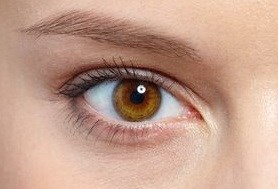






Held between 8-14 March, this is an annual initiative to raise awareness about what glaucoma does to sight and how it might affect sufferers. A World Glaucoma Week media event recently took place at St John's Eye Hospital in Soweto, hosted by ophthalmologist Professor Grant McLaren and Alcon. Prof McLaren reiterated that the lack of awareness of glaucoma is a critical problem both in South Africa and globally.
Compliance with medication once diagnosis is made is also key to preventing further vision loss. He said that approximately 60.5 million people globally have glaucoma, with 8.4 million of these people already blinded by the disease; this is expected to reach 11.1 million by 2020.
The burden on healthcare systems is immense, as is the effect on the quality of life of the glaucoma sufferer. Education and awareness about glaucoma is key.
In Africa, it is estimated that 4% of people over 40 will have glaucoma. In South Africa, 5-7% of the black population and 3-5% of the white population are affected. In many countries, approximately 50% of people with glaucoma do not know they have the disease.
It is the second leading cause of blindness globally, yet still today, millions of people are unaware of the risk factors associated with it. It is a complicated disease in which damage to the optic nerve leads to progressive, irreversible vision loss. Glaucoma is not curable and vision lost cannot be regained. Diagnosis is the first step to preserving vision.
The good news is that with early detection, through medical intervention and lifelong monitoring, further vision loss can be prevented.
Without diagnosis and treatment, patients will slowly lose their peripheral (side) vision. As glaucoma remains untreated, people may miss objects to the side and out the corner of their eye and will feel as if they are looking through a tunnel. Over time, central vision may decrease until no vision remains. Patients can lose as much as 40% of their sight before they even begin to notice.
The following patient groups are at an increased risk of developing glaucoma:
Regular testing can save sight
Although there is currently no cure for glaucoma, a number of treatments are available to assist patients in lowering eye pressure, a major risk factor for optic nerve damage. These include topical eye drops, which can be very effective.
People over the age of 40 should have a glaucoma test every two years, those between 50-60 years of age should be tested every 18 months and, over the age of 60, people should be tested yearly. Those with a family history of glaucoma should be tested from the age of 30. This is especially important if the affected relative was under 40 years of age when the glaucoma was first discovered. Glaucoma tests are painless.
While the risk increases above the age of 40, everyone from babies to senior citizens can develop glaucoma. It is vital for those diagnosed with glaucoma to inform their relatives so that they can also go for an eye examination.

